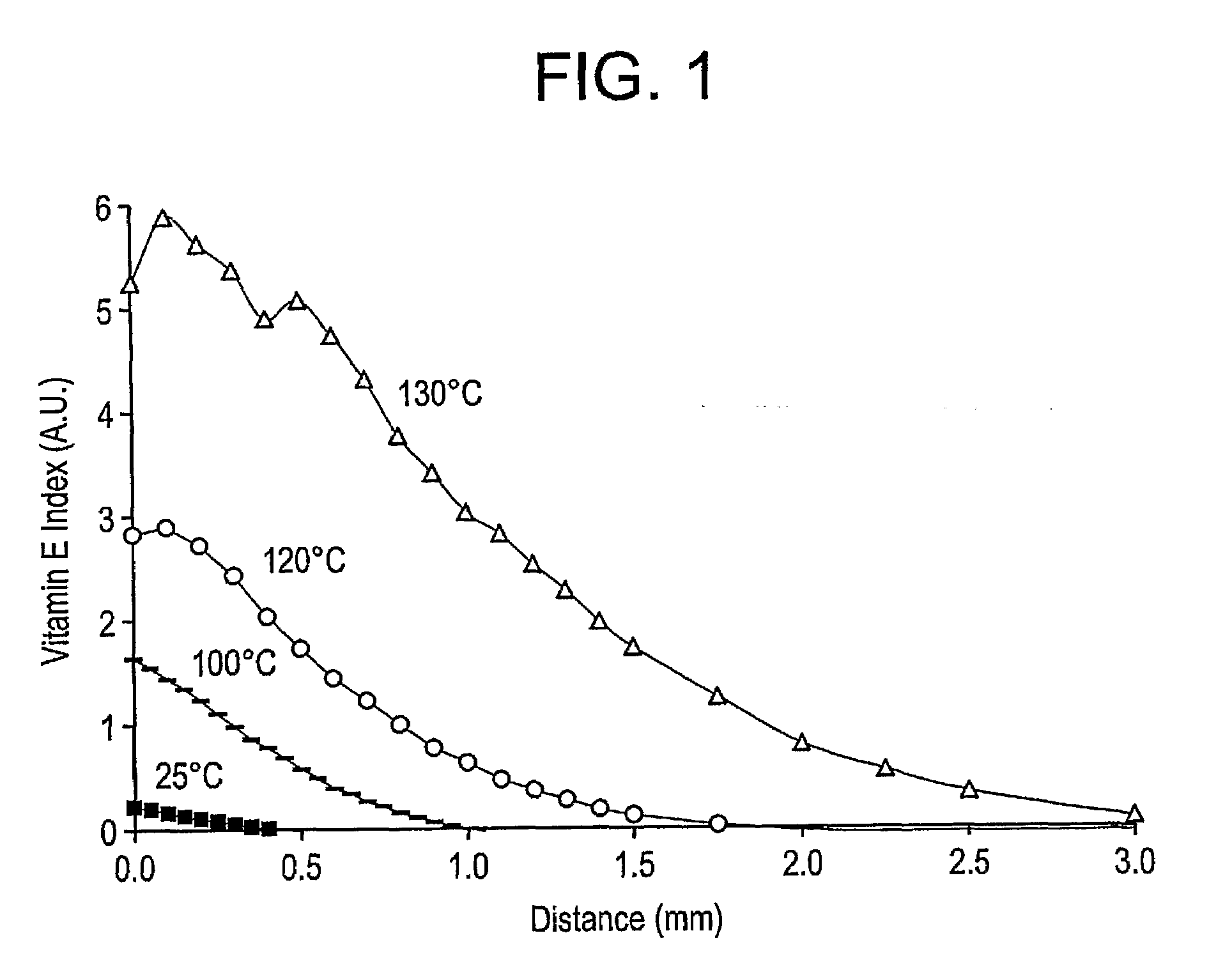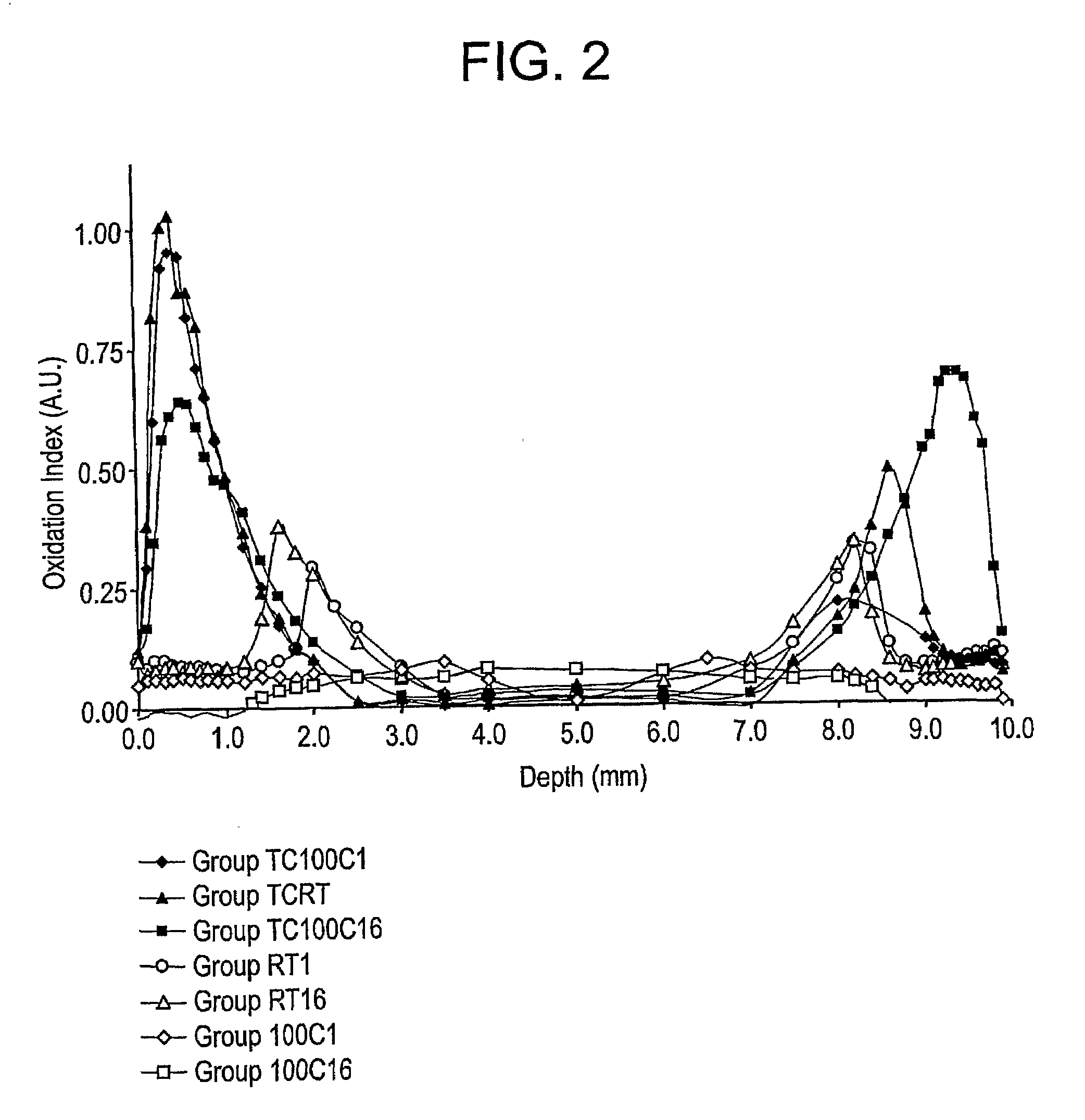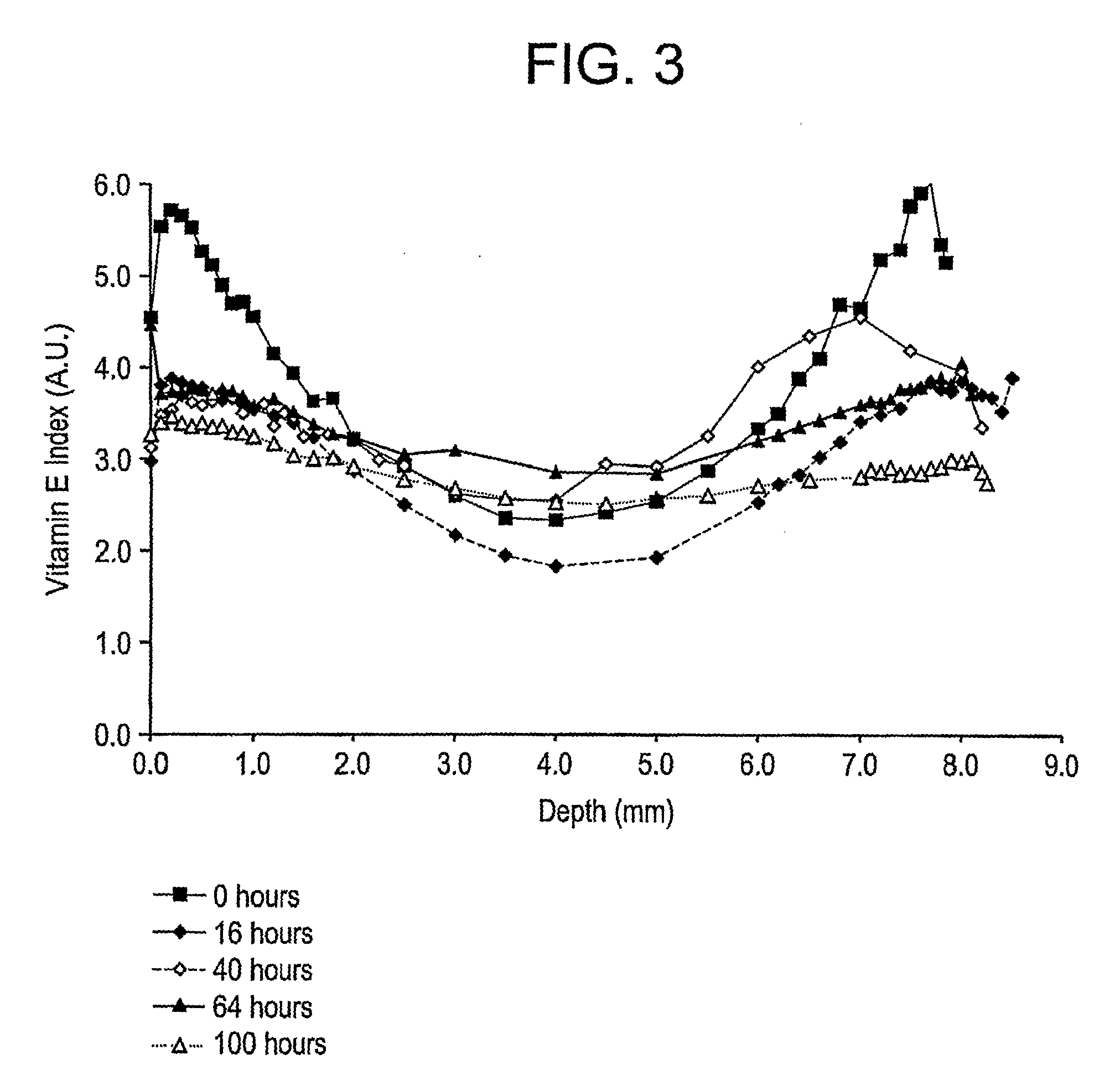Method For Making Oxidation Resistant Polymeric Material
a polymer material and oxidation resistance technology, applied in the field of oxidation resistant medical devices, can solve the problems of reducing the crystallinity of uhmwpe, compromising the performance of medical devices, reducing the yield strength, ultimate tensile strength, modulus, fatigue strength of uhmwpe, etc., and achieves the effect of increasing the uniformity of antioxidants
- Summary
- Abstract
- Description
- Claims
- Application Information
AI Technical Summary
Benefits of technology
Problems solved by technology
Method used
Image
Examples
example 1
Consolidation of UHMWPE Resin Mixed with Vitamin E
[0202]Vitamin E was dissolved in ethanol to create a solution with 10% (w / v) vitamin E concentration. The vitamin E-ethanol solution was then dry-blended with GUR 1050 ultra-high molecular weight polyethylene (UHMWPE) resin. Two batches were prepared: one with vitamin E concentration of 0.1% (w / v) and the other with 0.3% (w / v). The vitamin E concentrations were measured after evaporation of ethanol. Both batches were than consolidated on a Carver laboratory bench pressed at a temperature of 230° C. in air. The consolidated blocks were discolored. The 0.1% (w / v) solution appeared dark yellow and the 0.3% (w / v) solution had a brown color. The discoloration was uniform throughout the consolidated UHMWPE blocks.
[0203]The discoloration was thought to be the result of the degradation of vitamin E when heated in presence of oxygen.
example 2
Discoloration of Vitamin E when Exposed to Heat in Air or in Vacuum
[0204]An experiment was carried out to determine if the vitamin E discoloration is due to exposure to air at elevated temperatures and if the discoloration could be avoided by heating vitamin E under vacuum.
[0205]One drop of vitamin E solution, as described herein, was placed on a laboratory glass slide. The glass slide was then heated in an air convection oven to 180° C. for 1 hour in air. The vitamin E changed its color to a dark brown. The discoloration was most probably due to the degradation of the vitamin E.
[0206]One drop of vitamin E was placed on a laboratory glass slide. The glass slide was then heated in a vacuum oven to 180° C. for 1 hour under vacuum. In contrast to heating in air, vitamin E showed no discernible color change following heating in vacuum. Therefore, in the absence of air or oxygen, heat treatment of vitamin E results in no discernable color change.
example 3
Consolidation of UHMWPE / Vitamin E in Anoxic Environment
[0207]Vitamin E is dissolved in ethanol to create a solution. GUR1050 polyethylene resin is degassed either in vacuum or is kept in an anoxic environment to substantially remove the dissolved oxygen. The vitamin E-ethanol solution is then dry-blended with GUR1050 polyethylene resin. Two batches are prepared, one with degassed GUR1050 and the other with the as-received GUR1050 polyethylene resin. The dry-blended mixtures are then separately consolidated on a Carver laboratory bench press. Consolidation can be carried out in an anoxic environment to minimize the discoloration of the consolidated stock.
PUM
| Property | Measurement | Unit |
|---|---|---|
| temperature | aaaaa | aaaaa |
| temperature | aaaaa | aaaaa |
| time | aaaaa | aaaaa |
Abstract
Description
Claims
Application Information
 Login to View More
Login to View More - R&D
- Intellectual Property
- Life Sciences
- Materials
- Tech Scout
- Unparalleled Data Quality
- Higher Quality Content
- 60% Fewer Hallucinations
Browse by: Latest US Patents, China's latest patents, Technical Efficacy Thesaurus, Application Domain, Technology Topic, Popular Technical Reports.
© 2025 PatSnap. All rights reserved.Legal|Privacy policy|Modern Slavery Act Transparency Statement|Sitemap|About US| Contact US: help@patsnap.com



